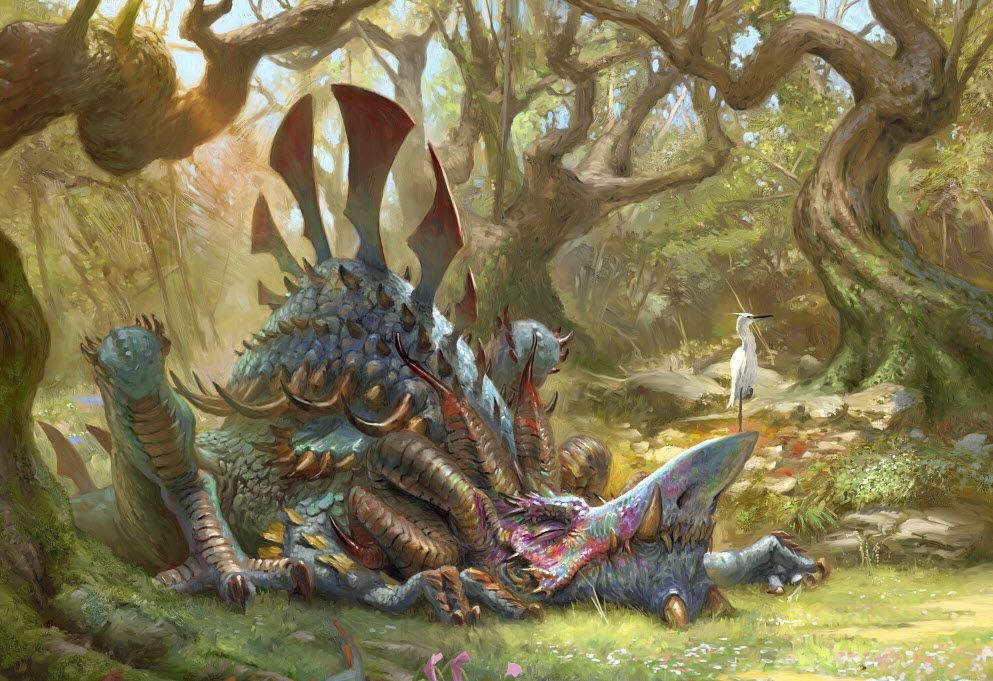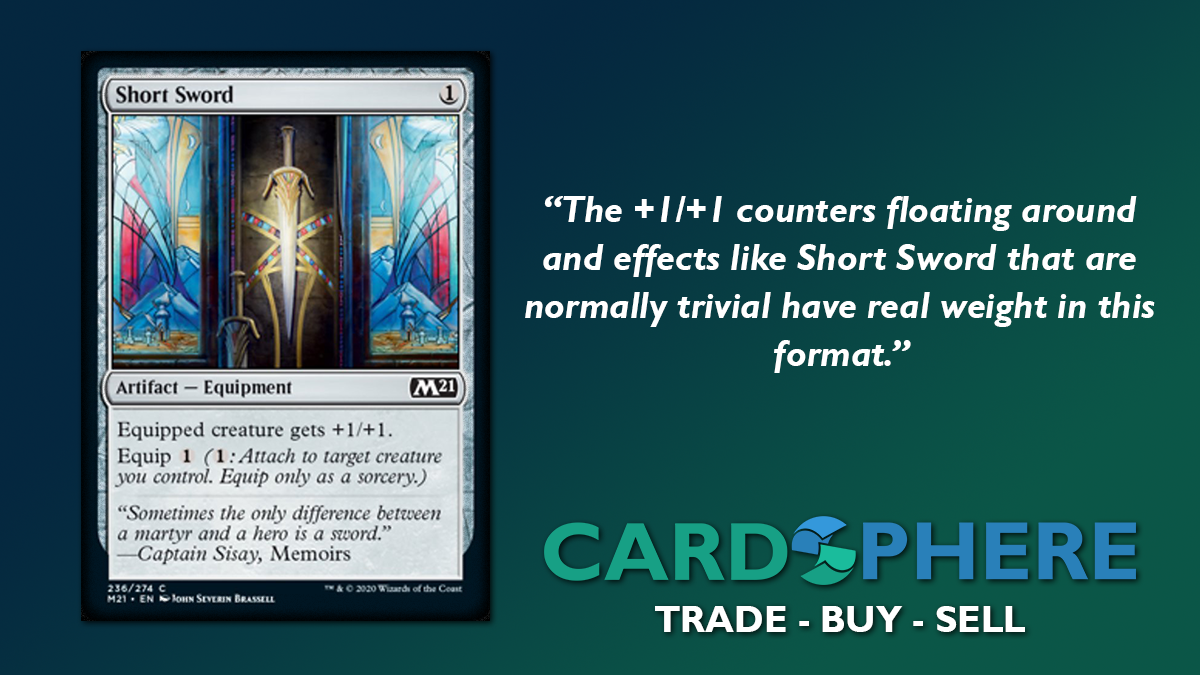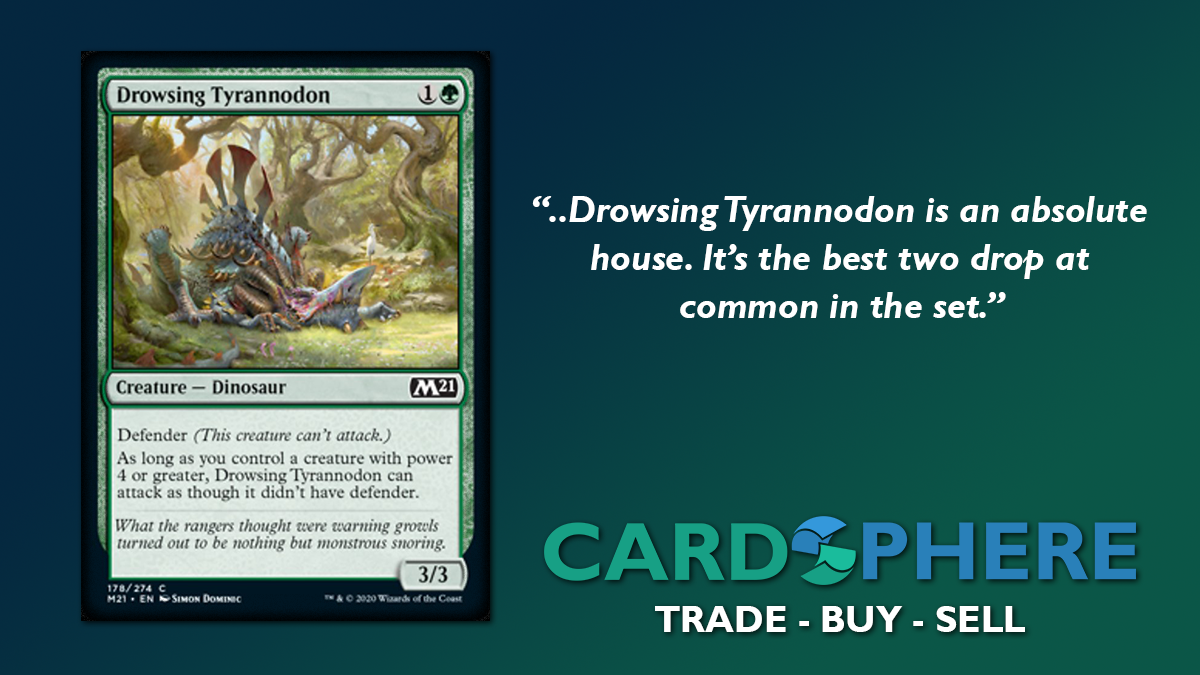Five Surprises in M21 Limited

As a magic content creator, there is no time more packed than the first weeks of a new set release. In the past week, I have done an entire set review on my stream, prepped for and recorded the Crash Course episode of Lords of Limited, participated in the WotC sponsored Early Access Event, and have since jammed about two dozen drafts. Starting with assumptions and evaluations of cards is incredibly important for your first few drafts of a format, but the way you stay ahead of the curve is by constantly adapting those evaluations based on your own experiences and the experiences of those you trust. I come to you today with the five biggest surprises and shifts I’ve made since getting my hands on Core Set 2021.

Look at the Pupper!!! (Creatures are SMALL)
The biggest shift for me, and the one that I think will contextualize a lot of the other surprises in this article, is that creatures across the board are quite small. And, the thing is, I should have known this! I knew going in to the format that Shock killed 48% of the creatures at common/uncommon and that Scorching Dragonfire killed 78% of them! That doesn’t leave many large monsters out there. If Shock could take out about half the creatures in the set, then so can a two poweRed creature. There are plenty of unexciting Grizzly Bears and Goblin Pikers in this format that perform way better than you would think because, across the board, most creatures are this size. This also makes augmenting creatures, even by just one power and toughness, quite relevant. The +1/+1 counters floating around and effects like Short Sword that are normally trivial have real weight in this format. Auras like Dub or Furor of the Bitten can have a huge impact (thanks in part to how absurd Feat of Resistance is), getting your creature out of range of the cheap and efficient removal and leaving your opponent taking huge chunks of damage before they can fire off their five mana removal like Secure the Scene.

green is Good
Maybe it was the order in which the commons were released, maybe it was coming off of Ikoria, maybe it was because it was the last color I looked at, but in my set review on stream, I slammed green. I could not figure out what these cards were trying to do. Sure, I understood Llanowar Visionary was busted, but beyond that I was not excited by what this color had to offer. If I had internalized the overall creature sizing more, I could have foreseen a few things about Green. First, Drowsing Tyrannodon is an absolute house. It’s the best two drop at common in the set. You can enable it as a four power attacker on turn three with cards like Setessan Training, Rousing Read, and Pridemalkin. Defending it completely brick walls a number of threats. And speaking of Pridemalkin, because the creature sizing is small, this often feels like more than one card of value. Putting a counter on something and leaving behind a 2/1 body might feel insignificant in other formats, but here a 2/1 has plenty to do. The last card that eluded me was Portcullis Vine which seemed like such a strange reprint. Since there are a lot of two power attackers, this can soak up quite a bit of damage in the early game and later in the game can on-demand trigger your card-draw matters or death-matters effects that Green cares about.

Grasping Black’s Power Level
Grasp of Darkness was one of the early spoiled commons for M21 and I think set the stage for expectations that Black would once again be one of, if not the best, color for limited. That just doesn’t seem to be the case. Because of the generally small creatures, there’s not that much more that Grasp can kill that Scorching Dragonfire can’t (a whopping 9% more.) With the restrictive double mana requirement, that’s not a huge incentive to take Grasp over Dragonfire. Beyond that and Deathbloom Thallid, Black’s commons leave a lot to be desired. There are three two drops in Masked Blackguard, Walking Corpse, and Fetid Imp. Blackguard is the best of the bunch, Corpse is highly replaceable, and Imp plays a nice defensive role, but forces you to play off curve if you want to activate its ability. Along the curve you’ve got a variety of effects, some good like Skeleton Archer or Finishing Blow and some clunky like Sanguine Indulgence and Rise Again, but all in all, the quality of black’s commons drops off dramatically after the first few and is a color I’m less excited to draft in M21.
Getting that Beach Body
Your curve matters A LOT in M21. I mentioned on the latest episode of Lords of Limited that you want to draw a line in the sand at three CMC or less and four CMC or more. You will not struggle at all to find acceptable cards to slot in along your curve that cost four and five mana. And if you take cards like Turret Ogre and Gnarled Sage early you will often be able to upgrade those to potentially better cards later in the draft, making it feel like you wasted picks early on cards that are now sitting in your sideboard. Knowing which expensive spells are irreplaceable (like Basri’s Acolyte and Roaming Ghostlight) and which ones aren’t will lead you to having much better decks at the end of your draft. I’ve started taking Drowsing Tyrannodon over Hunter’s Edge, Chandra’s Magmutt over Turn to Slag, and could even see spots where you’d take an Alpine Watchdog over Gale Swooper.
Get a Life!
One of the signs of whether a format will be aggressive or not is the presence of incidental life gain. With the entire theme of Orzhov being centered around gaining life, I assumed that would slow down and/or invalidate a number of aggressive strategies. That just hasn’t been the case so far for me and I think I know why. All of the lifegain bonuses like Griffin Aerie and Indulging Patrician care about you gaining life on your turn which means you either have to be the aggressor with a Lifelink creature or you’ve cast Revitalize. Being the aggressor with lifelink doesn’t afford you the opportunity to leave your lifelink creature back on blocks which is the big way to stop an aggressive deck in its tracks. The other reason is the absence of a creature like Aven of Enduring Hope. The fact that there isn’t a creature that gets you the life immediately (save for Trufflesnout) is a knock against the lifegain strategies as a whole. When your only hope is to connect in combat with your Blood Glutton and your opponent casts Scorching Dragonfire or Swift Response on it in combat, you’re in trouble.
There was a lot of this format that I think I got right going into it, but these were definitely the five biggest adjustments I had to make. I look forward to seeing what else M21 has in store for me as I dive deeper and deeper into the drafts. What has surprised you in your first few drafts of this set? Let me know on Twitter! And, as always, Happy Drafting!
